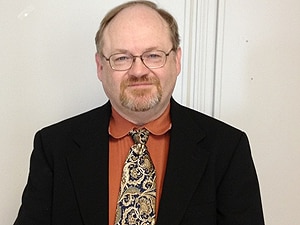Like this article?
Read medical news in 32 specialtyareas with our Medscape App.
Choose the specialties you want
to follow.
Learn More
January 26, 2012 — In good news for healthcare reformers, North Carolina saved almost $1 billion in Medicaid costs over 4 years by enrolling patients in medical homes designed for more intense primary care, according to a report from the healthcare consulting firm Milliman.
The report, issued last month, also contains a lesson about patience, seeming to say that the full benefits of healthcare reform do not materialize immediately.
Of the $894 million saved from fiscal 2007 through 2010, 69% came in the last 2 years, and 39% in the last year alone. Milliman calculated savings by comparing actual expenditures to what they would have been if Medicaid enrollees received traditional medical care.
In part, the rise in annual savings appears to reflect the sheer growth in the number of Medicaid patients in the state's medical home program, which began in the late 1990s. During the 4 years studied by Milliman, enrollment rose from 980,000 to 1.3 million — a 33% increase.
Annual savings, however, rose at a far faster rate: 270%. Milliman attributed the snowball effect to how an initial investment in improved primary care for new enrollees reduced the number of emergency department visits and hospitalizations that might otherwise have occurred a few years later. Fewer trips to the hospital, in fact, accounted for most of the savings.
Ease of Access a Medical Home Attribute
Touted as the future of primary care, medical homes stress continuity of care, ease of access, prevention, patient and caregiver engagement, and the use of electronic health record (EHR) software. Medical homes consist of multidisciplinary care teams, usually headed by a physician.
 |
Dr. Robert "Chuck" Rich Jr |
Those attributes describe Bladen Medical Associates, an 8-physician practice in Elizabethtown, North Carolina, that provides a medical home to Medicaid enrollees. Something as simple as offering more same-day appointment slots can make a big difference in health outcomes and expenditures, said Robert "Chuck" Rich Jr, MD, a family physician in the group.
"We get them into the office before their condition has an opportunity to worsen," said Dr. Rich in an interview with Medscape Medical News. "And when patients aren't forced to wait several days for an appointment slot, they're less likely to go to an emergency room or urgent care clinic for their problem."
Dr. Rich credits his group's EHR with helping them follow-up on tests ordered during an office visit. It can generate reports that identify which orders for X-rays, mammograms, and laboratory tests are still pending; that is, for which no results have yet been received by the group. "We don't want to be in the position where an order falls through the cracks," said Dr. Rich.
Getting the Mold out of an Asthma Patient's Home
Bladen Medical Associates belongs to 1 of 14 regional nonprofit networks of primary care practices and hospitals in the state that make up a group called Community Care of North Carolina (CCNC). These networks contract with the state Medicaid program to provide medical homes for its enrollees.
Dr. Rich's local CCNC network helps his practice meet its medical home objectives by supplying it with several nurse care coordinators. Employees of the network itself, these clinicians work out of practices such as Bladen Medical Associates to round out the care team. Their responsibilities include checking in with patients after a hospital discharge, arranging referrals to specialists (and transportation if needed), and making home visits to see for themselves which medications a patient is, or is not, taking.
CCNC communications director Paul Mahoney recalls how 1 nurse care coordinator discovered that a 6-year-old patient with asthma lived in a home with mold.
"She persuaded the landlord to remove it, and the child got considerably better," Mahoney toldMedscape Medical News.
Because medical practices typically do not employ enough staffers to tackle these kinds of jobs, a nurse care coordinator is a godsend, said Mahoney. "Physicians love them."
Medicare Eyes Medical Home Benefits Too
The federal government is hoping that medical homes such as Dr. Rich's produce the same clinical and financial outcomes in Medicare. The Centers for Medicare and Medicaid Services (CMS) has been testing the concept in demonstration projects for some time, and will continue to do so under the auspices of the Affordable Care Act.
Last September, CMS announced that it will pay $20 per member per month to physicians providing care coordination to Medicare patients as part of a demonstration project called the Comprehensive Primary Care Initiative. The care coordination fee comes on top of regular fee-for-service (FFS) reimbursement. Physicians in the Medicaid medical home program in North Carolina have the same arrangement: a monthly per-member fee in addition to FFS pay.
CMS experiments to save money and improve patient care in Medicare have largely fizzled, according to a report issued earlier this month by the Congressional Budget Office. However, it noted that demonstration projects were more likely to succeed if their nurse care coordinators saw patients face to face, which happens in Dr. Rich's practice, as opposed to merely having a telephone conversation.

No comments:
Post a Comment